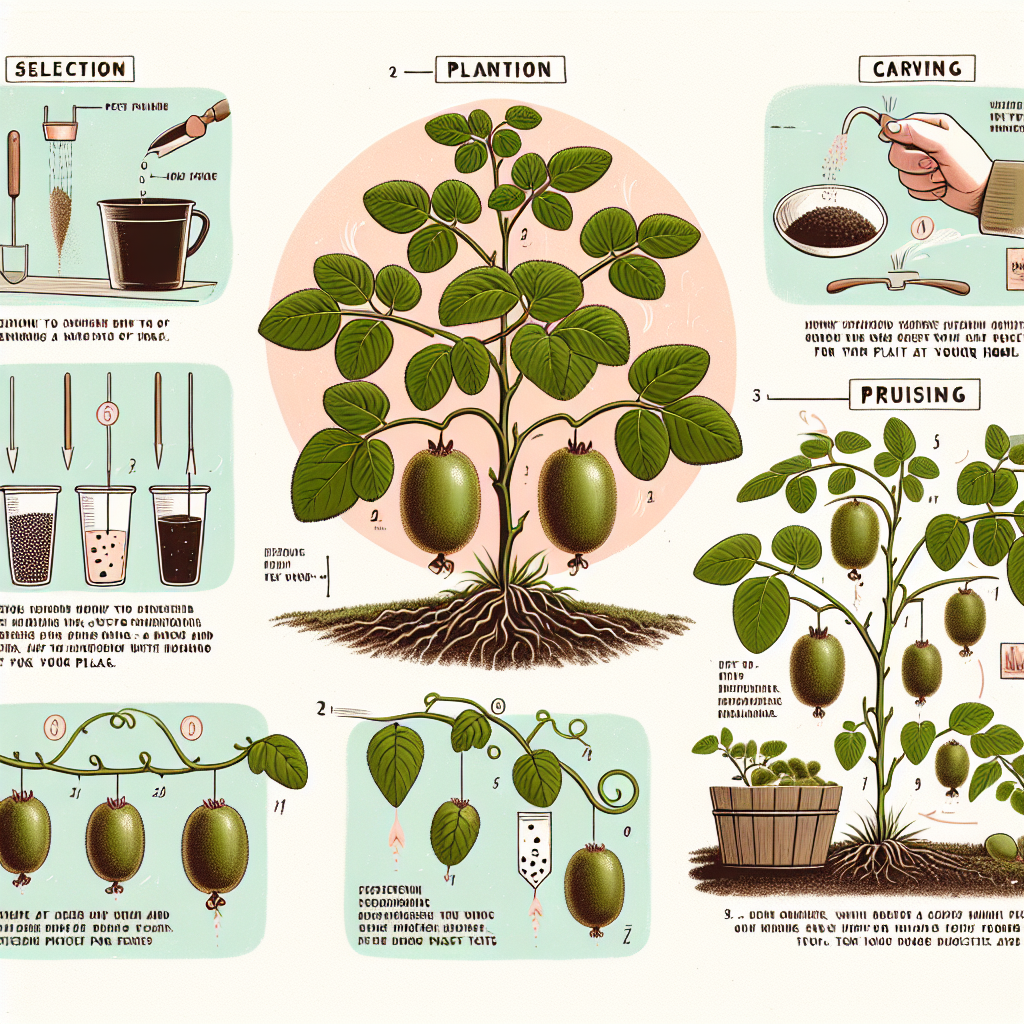A Complete Guide to Growing Kiwi Fruit in Your Home
Introduction:
Growing your own fruits at home is not only a rewarding experience but also ensures that you have access to fresh and healthy produce. One fruit that is becoming increasingly popular among home gardeners is kiwi. Known for its vibrant green flesh and sweet-tart flavor, kiwi fruit is packed with essential vitamins and minerals. In this article, we will provide you with a complete guide on how to grow kiwi fruit in your home.
Choosing the Right Variety:
Before embarking on your kiwi growing journey, it’s important to choose the right variety that suits your climate zone. Kiwi plants are dioecious, which means they have separate male and female plants. The female plants bear the fruit, while the male plants are required for pollination. Some popular kiwi varieties include ‘Hayward,’ ‘Issai,’ ‘Jenny,’ and ‘Ken’s Red.’ Make sure to research which variety will thrive in your specific climate.
Location and Soil Preparation:
Kiwi plants require a sunny location with well-draining soil. They prefer slightly acidic soil with a pH level between 5.5 and 7.0. Start by preparing the planting area by removing any weeds or grass and loosening the soil with a fork or shovel. Add organic matter such as compost or well-rotted manure to improve fertility and drainage.
Planting Kiwi Plants:
Once you have chosen a suitable location and prepared the soil, it’s time to plant your kiwi plants. Dig a hole that is wide enough to accommodate the plant’s root system without crowding it. Place the plant in the hole at the same depth it was in its container or nursery pot, ensuring that the top of the root ball is level with the surrounding soil.
Spacing:
Kiwi plants need ample space for their sprawling growth habit. Space each plant at least 10 feet apart to provide sufficient room for the vines to spread. It’s also essential to install a sturdy trellis system or support structure for the vines to climb and grow.
Watering and Fertilizing:

Proper watering is crucial for the healthy growth of kiwi plants. Water them regularly, especially during dry spells, ensuring that the soil remains consistently moist but not waterlogged. Mulching around the plants helps retain moisture and suppresses weed growth.
Apply a balanced fertilizer during the growing season to provide essential nutrients. Follow package instructions for the appropriate dosage and timing. Avoid over-fertilizing, as it can lead to excessive leaf growth but limited fruit production.
Pruning and Training:
Pruning is essential for maintaining healthy kiwi plants and encouraging optimal fruit production. Kiwi plants produce fruit on wood that is about a year old, so it’s important to prune out older wood each year. Pruning should be done during late winter or early spring before new growth begins.
Training the vines along a trellis system is also necessary. Gently tie the stems to the trellis, ensuring they are evenly spaced apart. Regularly check for any ties that may need adjusting as the vines grow.
Pest and Disease Control:
Like any other fruit plant, kiwis are susceptible to pests and diseases. Common pests that attack kiwi plants include aphids, mites, and scale insects. Regularly inspect your plants for signs of infestations and promptly treat them with organic pest control methods or insecticidal soap if necessary.
Diseases such as root rot, leaf spot, and bacterial canker can also affect kiwi plants. Proper sanitation practices like removing infected plant material can help prevent diseases from spreading. If needed, consult a local nursery or extension service for specific treatment options.
Harvesting:
After all your hard work throughout the growing season, it’s time to reap the rewards! Kiwi fruits are usually ready for harvest in late summer or early autumn, depending on the variety and your climate. Ripe kiwis should be firm but slightly soft to the touch. Carefully cut them from the vines with pruning shears, leaving a small stem attached.
Conclusion:
With the right care and attention, growing kiwi fruit in your home can be a rewarding and enjoyable experience. From choosing the right variety to providing proper care through watering, fertilizing, pruning, and pest control, you can ensure a bountiful harvest of this delicious fruit. So why not give it a try? Start growing kiwi fruit in your home today and enjoy the sweet rewards straight from your garden.













